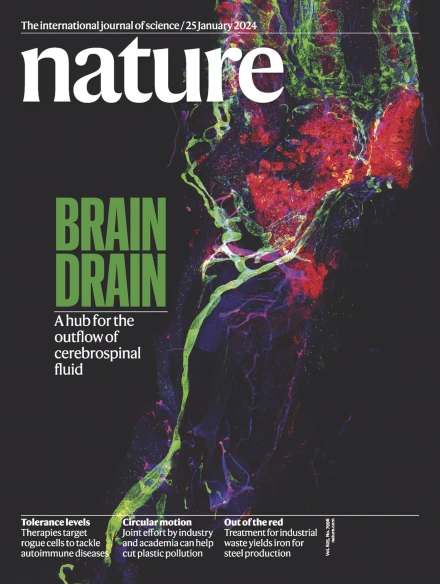在变暖的北极,植物多样性随时间和空间的变化
IF 48.5
1区 综合性期刊
Q1 MULTIDISCIPLINARY SCIENCES
引用次数: 0
摘要
北极的变暖速度是全球平均速度的四倍,植物群落正在通过物种丰富度、组成和分布的变化做出反应。然而,北极地区植物多样性局部变化的方向和幅度尚未被量化。利用来自北极地区2174个样地的490种维管植物的42234条记录,通过1981年至2022年的重复调查,我们量化了物种丰富度和组成的时间变化。我们还发现了这些变化背后的地理、气候和生物驱动因素。我们发现,在低纬度和温暖的地点,物种丰富度更高,但没有迹象表明,平均而言,物种丰富度随着时间的推移而发生方向性变化。然而,物种更替很普遍,59%的样地物种增加或减少。在气温上升最多的地方,物种的增减比例更大。灌木的扩张,特别是直立灌木的扩张,与物种损失和物种丰富度的减少有关。尽管植物组成发生了变化,但北极植物群落并没有变得更加相似,这表明到目前为止还没有生物同质化。总体而言,北极植物群落的丰富度和组成在不同方向上发生了变化,温度和植物-植物相互作用成为变化的主要驱动因素。我们的研究结果表明,气候和生物驱动因素如何协同作用,改变植物组成,这可能先于未来可能影响生态系统功能、野生动物栖息地和北极人民生计的生物多样性变化5,6。本文章由计算机程序翻译,如有差异,请以英文原文为准。


Plant diversity dynamics over space and time in a warming Arctic
The Arctic is warming four times faster than the global average1 and plant communities are responding through shifts in species abundance, composition and distribution2–4. However, the direction and magnitude of local changes in plant diversity in the Arctic have not been quantified. Using a compilation of 42,234 records of 490 vascular plant species from 2,174 plots across the Arctic, here we quantified temporal changes in species richness and composition through repeat surveys between 1981 and 2022. We also identified the geographical, climatic and biotic drivers behind these changes. We found greater species richness at lower latitudes and warmer sites, but no indication that, on average, species richness had changed directionally over time. However, species turnover was widespread, with 59% of plots gaining and/or losing species. Proportions of species gains and losses were greater where temperatures had increased the most. Shrub expansion, particularly of erect shrubs, was associated with greater species losses and decreasing species richness. Despite changes in plant composition, Arctic plant communities did not become more similar to each other, suggesting no biotic homogenization so far. Overall, Arctic plant communities changed in richness and composition in different directions, with temperature and plant–plant interactions emerging as the main drivers of change. Our findings demonstrate how climate and biotic drivers can act in concert to alter plant composition, which could precede future biodiversity changes that are likely to affect ecosystem function, wildlife habitats and the livelihoods of Arctic peoples5,6. Warming temperatures and interactions between plants are the main drivers of changes in Arctic plant communities in response to climate change, and there is no evidence of overall biotic homogenization.
求助全文
通过发布文献求助,成功后即可免费获取论文全文。
去求助
来源期刊

Nature
综合性期刊-综合性期刊
CiteScore
90.00
自引率
1.20%
发文量
3652
审稿时长
3 months
期刊介绍:
Nature is a prestigious international journal that publishes peer-reviewed research in various scientific and technological fields. The selection of articles is based on criteria such as originality, importance, interdisciplinary relevance, timeliness, accessibility, elegance, and surprising conclusions. In addition to showcasing significant scientific advances, Nature delivers rapid, authoritative, insightful news, and interpretation of current and upcoming trends impacting science, scientists, and the broader public. The journal serves a dual purpose: firstly, to promptly share noteworthy scientific advances and foster discussions among scientists, and secondly, to ensure the swift dissemination of scientific results globally, emphasizing their significance for knowledge, culture, and daily life.
 求助内容:
求助内容: 应助结果提醒方式:
应助结果提醒方式:


